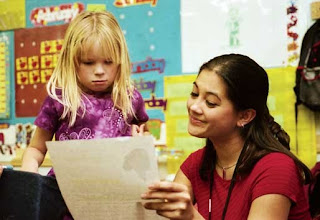

When I first found out that a requirement to pass this course was being placed in a low income area in State, I freaked out a ltitle bit. I no its an aweful thing to say, but I didn't know what to expect. I went to a Catholic school my whole life until ninth grade, when I switched over to my towns High School. I didn't know what kind of place I was going to have to walk into multiple times, but when I walked in I was shocked to see that the building was kept up beautifully.
I had a great time going every week, for that matter it was the highlight of my week. The children that I worked with really ended up having a close connection that I actually teared up a bit when I was leaving them on my last visit, because I felt like I could have made a couple of them a little more excited about learning than they already were, so I left with a feeling of accomplishment. The children really appreciated the time that me along with my fellow peers spent with them, because we payed attention to them, and saw their learning potential.
Along with getting close to the children I tutored, we often talked about our experiences in our College class. We would all talk about our visits and any questions or concerns, and for some people they just needed to vent about a horrible experience. When I first started the class I was concerned that I would never feel comfortable, but I just wanted to say to everyone, Its been a great semester with all of you, and I hope we can all stay in contact with one another because it was a great experience, and I was comfortable around all of you! Have a great summer and good luck in being a teacher, because....What Kind of Teacher Do You Want To Be!!! =)








